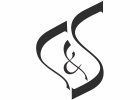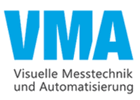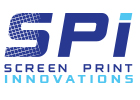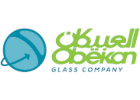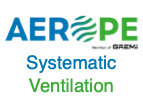Glaston has reviewed its strategy and updated its financial targets for the strategy period 2018–2021 as a result of its acquisition of Bystronic glass.
The foundation of the strategy remains unchanged; we continue to seek growth in our core business and to win in services through digitalization. Combining the strengths of Bystronic glass and Glaston as well as leveraging the know-how Bystronic glass adds to our business, provides us with unique opportunities to build a strong machinery and services offering as well as the ability to capture new growth opportunities. Implementing a joint operating model will support us in reaching our strategic goals and in realizing the full synergy potential of combining Glaston and Bystronic glass.
Our overall strategic goal remains unchanged: our ambition is to be the industry’s innovative technology leader, realizing its customers’ highest ambitions in glass.
Glaston’s purpose is to build a better tomorrow through safer, smarter, and more energy-efficient glass solutions. The demand for environmentally sustainable and energy-efficient solutions, tightening safety standards as well as growing visual and functional quality requirements of glass, increasingly affect the way our customers operate as well as impact the specifications they require from their glass processing technology partners.
Our strategy is divided into four key themes:
GROWTH IN CORE
Strategic aim: To become a global market leader in our core business
We will focus on growth in our core business with the aim of becoming the leading player in Heat Treatment technologies and Insulating glass as well as in Cut & Grind technologies for the Automotive market.
With our versatile product portfolio, we are in a strong position to respond to the demand for innovative solutions. We will seek growth in our core business, and work to develop an integrated glass processing line offering and drive the automation of equipment for the benefit of our customers.
Key Goals:
- Profitably grow core machine sales, develop an integrated line offering as well as increase digitalization and level of automation in products leading up to fully automated lines.
NEW GROWTH OPPORTUNITIES
Strategic aim: To capitalize on new market potential
Combining the strengths of Bystronic glass and Glaston, as well as leveraging the know-how Bystronic glass adds to our business, provides us unique opportunities to develop the market and further strengthen our position in the mid-market segment of our core products, in technologies for the Automotive market and in emerging glass processing technologies within energy efficient, smarter and safer glass products.
Growth is sought through the development of our product portfolio and the development of an integrated line offering to better suit the glass processing mid-market segment customers’ needs, especially in the Architectural market in Asia. We will further seek to leverage the strong position of Bystronic glass in the Automotive market, further develop our offering in the mid-market segment and thus aim to capture cross-selling opportunities. We will continue to seek opportunities for emerging glass processing technologies within energy efficient, smarter and safer glass.
Key Goals:
- Develop mid-market offering in Architectural market.
- Leverage the strong position of Bystronic glass in the Automotive market and capture cross-selling synergies.
- Continue to look for new opportunities and technologies to support growth in our Emerging Technologies product area.
SERVICES
Strategic aim: To win in services through digitalization.
We believe that by combining the Services businesses of Glaston and Bystronic glass, we will drive growth. We will seek to leverage untapped potential from existing unique lifecycle services, our combined large installed base and extensive global service network.
Today, most of the service work is performed in-house by our customers. We see strong untapped potential in combining our extensive installed bases with innovations within digitalization and automation for the benefit of the customer. We believe that the combined services offering of Glaston and Bystronic glass has the potential to lead to appealing benefits for the customers and provide a base for further development of proactive and predictive maintenance and optimized services, with the aim of covering the key parts of the whole processing chain in the future.
The combined service offering enables us to expand our scope with the ambition to optimize the performance of our customers ’installed base throughout the lifecycle, using data analytics and artificial intelligence to support customers’ business decisions. Our goal is to have the most competitive ecosystem in the market, benefiting our customers and improving their uptime and operational efficiency. We believe this differentiates us from the competition and puts us in a strong position to fulfil the most demanding needs of our customers.
Key Goals:
- Grow the Services business supported by digitalization.
JOINT OPERATING MODEL
Our strategic goals are supported by a joint operating model which will assist us in realizing the full synergy potential of combining Glaston and Bystronic glass. We aim to develop a cohesive and effective operating model for sales, service and operations, capture synergy potential and continuously improve our performance. The first phase of building the joint operating model targets cost synergies, cross-selling, strengthening our joint presence in Asia and further developing integrated line offerings for relevant end markets.
Key Goals:
- Develop cohesive and effective operating model for sales, service and operations. Realize full synergy potential.
UPDATED FINANCIAL TARGETS:
- Annual growth of net sales exceeding market growth* (CAGR)
- Comparable operating margin (EBITA)** above 8% at the end of the strategy period. EBITA excludes amortizations of purchase price allocations.
- Comparable return on capital employed (ROCE)** of more than 14% at the end of the period
Glaston (without Bystronic glass) restated comparable EBITA margin for 2018 was 5.6% and comparable return on capital employed 9.6%. Bystronic glass is similar to Glaston in net sales and EBITA margin. The Bystronic glass acquisition, and related financing increases Glaston’s equity and debt for a total of about EUR 80 million and the transaction will result in a significant amount of goodwill created. Therefore, the return on capital employed (ROCE) development will be impacted by increasing capital employed during the strategy period immediately following the transaction.




